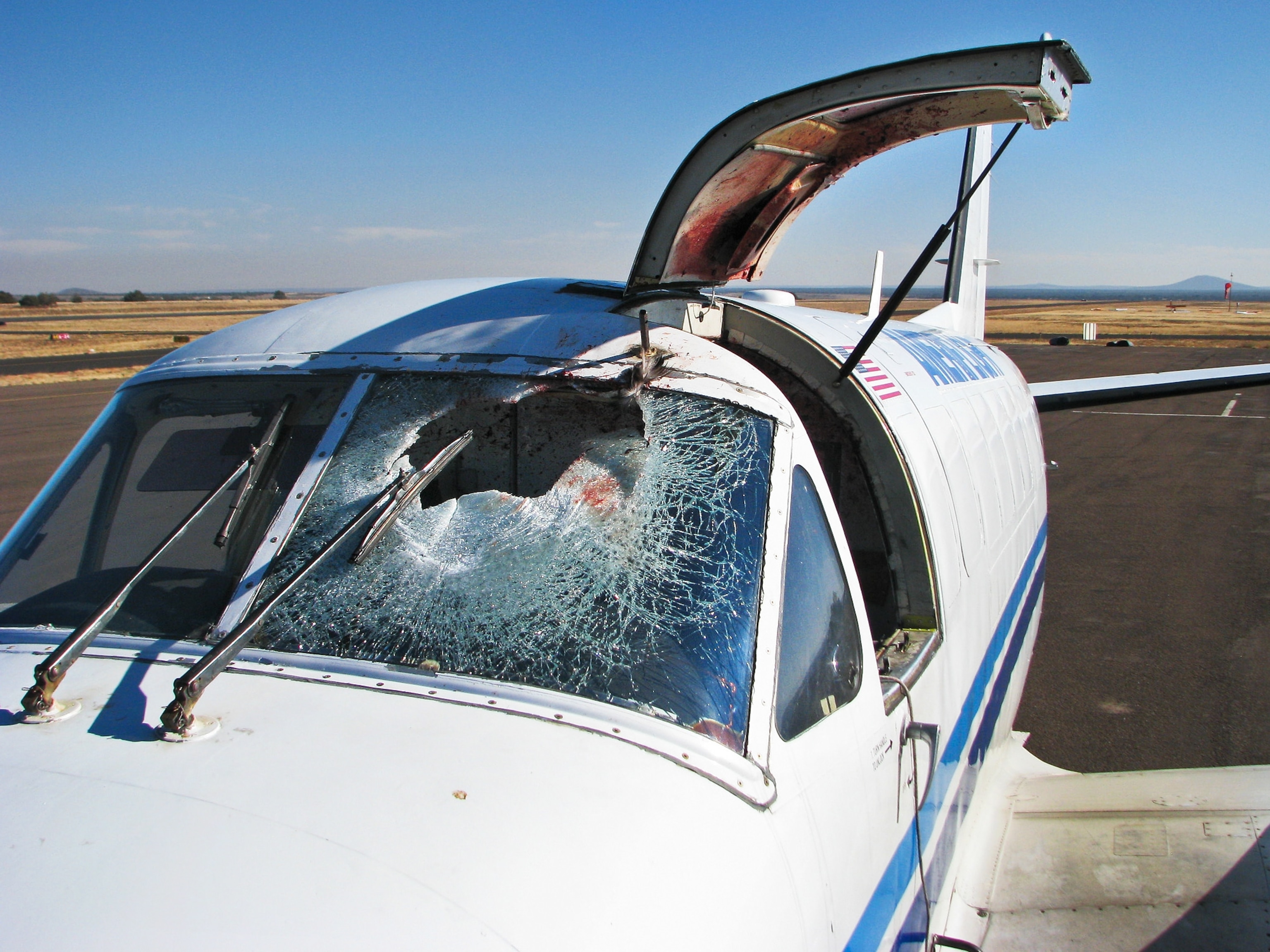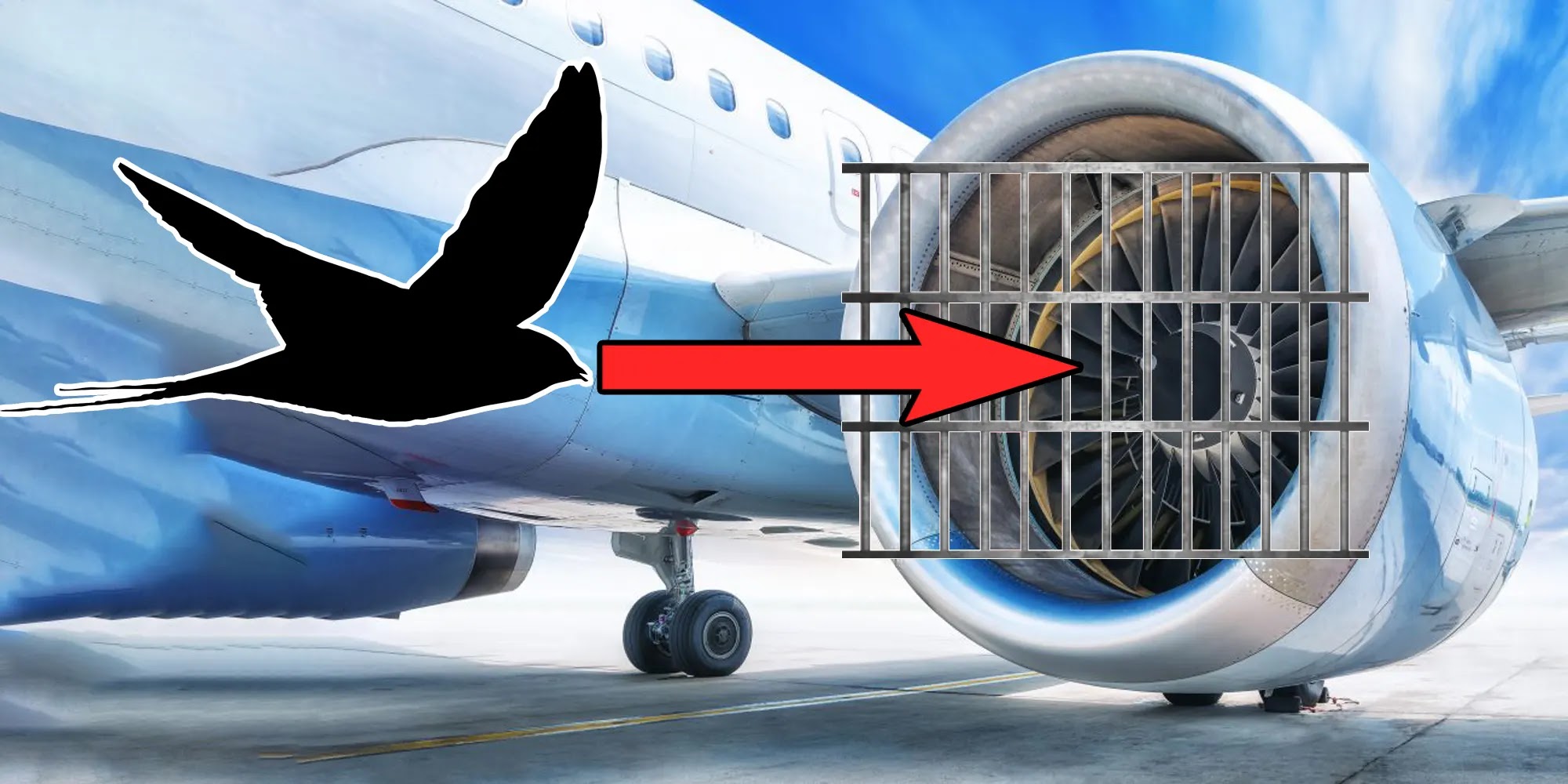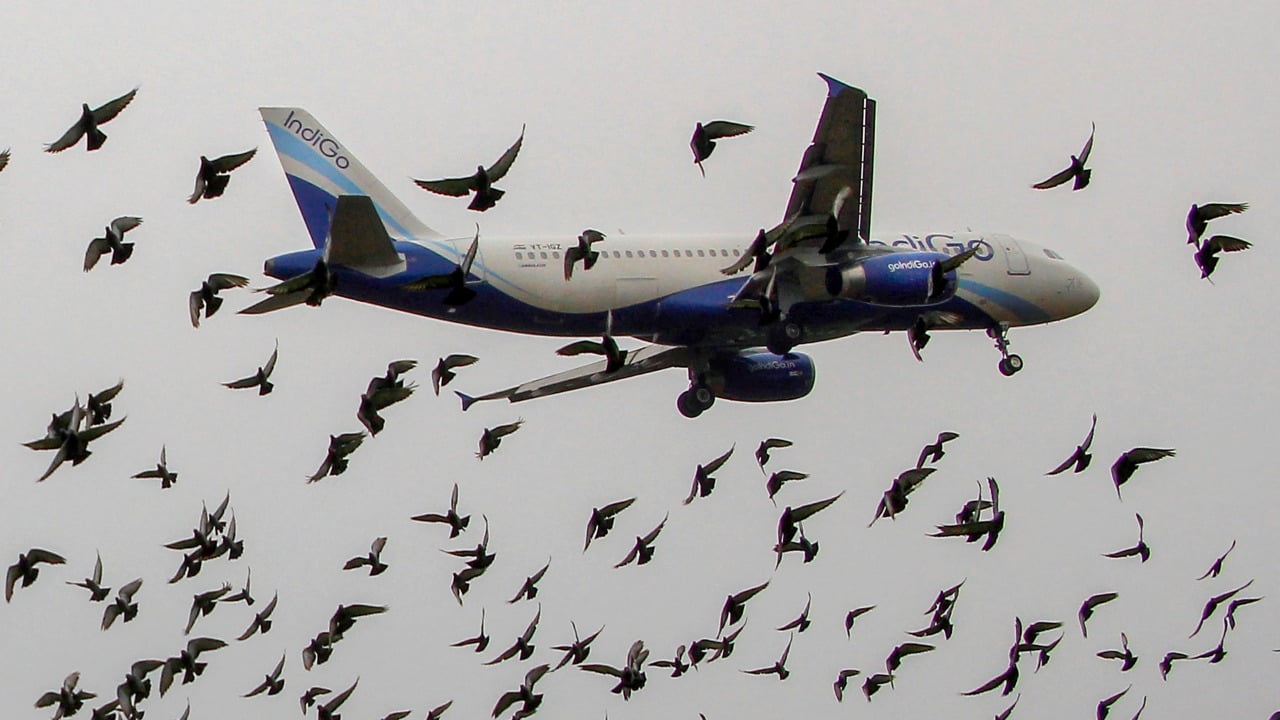After applauding Captain Monica Khanna’s brilliantly handled emergency landing of the SpiceJet Patna-Delhi flight two days ago, the question on everyone’s mind is what would have happened if the pilot(s) had been unable to handle the situation? This brings to light the occurrence of aircraft collisions with birds, which have long been an inevitable aspect of the aviation industry.
Let’s look at what bird strikes are and the potential threats they bring to the aviation industry.
What exactly is a bird strike?
This phenomenon occurs when an aerial animal (typically a bird or a bat) collides with an airplane, either in mid-air during its flight or on the airport premises.
History
According to sources, Orville Wright (one of the Wright brothers known for building and flying the world’s first successful airplane) reported the first such occurrence of a bird hit in 1905.
It was noted that Orville was flying circles in a cornfield in Ohio; he had probably been chasing flocks of birds before colliding with one. The dead bird lay on his plane’s wing till he made a quick turnaround to remove it.

Monetary damage
Every year, collisions between birds and airplanes incur significant losses to the aviation sector in terms of damage and delays. There are techniques for controlling birds on airfields and thereby reducing the incidence of wildlife attacks, although they are used at vastly disparate levels. Some of this difference may be attributable to variable degrees of strike risk at the various sites, but most of it is due to the airports’ refusal or inability to invest in such avoidance. Part of the reason for the airlines’ reluctance to engage in bird control is a misunderstanding of the actual costs of direct aircraft damage, as well as delays and cancellations.
However, according to an International Civil Aviation Organization (ICAO) survey that included data from 91 nations, airlines face an average of 34 bird strikes per day. The annual damage was more than $1 billion, with the loss of 276 lives and the destruction of at least 108 airplanes.
Conditions favorable
Because of the increased quantity of birds in flight at lower levels, these events are more likely during the take-off, early climb, approach, and landing phases. Because most birds fly throughout the day, the collisions occur during the day as well. Hence, bird attacks are frequent when an airplane is flying low.
Contributing Factors
- Birds depend on habitat elements such as open stretches of grass and water, as well as bushes and trees, for food and roosting. Even little accumulations of water on irregular surfaces can be a significant bird attractant.
- If landfills and other trash disposal facilities are not effectively managed, they can attract significant numbers of birds.
- Certain sorts of agricultural activities on or near an airport may attract these flying creatures.
- Migrating birds frequently follow well-defined flight patterns in large numbers. This might be dangerous if the flight routes are close to an airport.
- Coastal airports frequently have far greater levels of unmanaged bird activity than interior airports.
- Most airports have large amounts of grass around their boundary lines. Even dry grass can be appealing to birds as a resting spot throughout the day or night.
How dangerous are these collisions?
These attacks are quite common, although they are rarely deadly. Aircraft are constructed and equipped to resist this attack, and pilots receive extensive training to prepare them for such an incident.

When a flying creature enters an engine, the energy contained within the engine typically causes the bird to explode. There could be extensive damage to the engine in a serious incident, but losing one engine is very unlikely to produce a plane to collapse since they are constructed to fly with one engine down, and pilots are regularly tested in the simulation model to prove they can fly their aircraft after an engine failure.
However, several bird hits, huge birds, or a larger flock of many birds, might result in major mishaps.
- Small, propeller-driven airplanes are more susceptible to suffer structural damage from attacks, such as puncture of flight deck windscreens or breakage to flight controls or the empennage. Windscreen penetration has resulted in injuries to pilots and other people in certain circumstances, particularly in smaller fixed-wing aircraft and helicopters, and has sometimes resulted in a loss of control.
- Larger jet-engine airplanes are more prone to suffer the harmful effects of engine ingestion. This is the most deadly type of such an hit, wherein a bird is ingested into the aircraft’s engine; known as jet engine ingestion (because the creature is ‘ingested or consumed’ by the engine). Bird ingestion into one or more engines is rare, although it can take place because of a big flock of medium-sized birds or interaction with a smaller number of extremely large birds.

- Although unusual, a higher altitude bird hit to a pressurized aircraft might cause significant damage to the aircraft hull, leading to fast depressurization. Impact damage to extended landing gear components in flight is a more likely source of trouble, which can create enough failure of brakes or nose gear steering systems to form directional control issues during a subsequent landing roll.
Appropriate Defense
- Ground-level accountability
Airports play an important role in minimizing possible collisions. Certain strategies are used by the ground staff to maintain the ecosystem. It keeps the grass on the airfield between six and eight inches tall, for example, to discourage birds from sheltering there. Officials at the site have also put steps in place to control wildlife in the neighboring regions, ensuring that natural life is carefully preserved.
- Location
The airport’s location also has a significant impact on the number of birds that pose a risk on the runway. Consider the contrasted amount of bird hit that occur at Munich Airport, which is far greater than the number of accidents at London Airport. The location is the primary distinguishing feature between the two. More birds flock to the former one, which is located on a larger piece of land. Meanwhile, the latter, which is surrounded by skyscrapers, presents a little issue in this respect.
- Deterrents
In addition, airports frequently employ speakers to broadcast distress sounds, which might prevent birds. For example, the officials at London Heathrow spend on research to determine which sorts of birds are local to the region and how they respond to various deterrents. They also cover open waterways to keep animals away.
- Role of air players or airplanes
- A grid appears to be the most cost-effective solution to the bird hit problem. A grid at the intake end, on the other hand, poses a significant risk. A 1.8-kilo creature hitting the intake at high velocity equals 3,50,000N, which would break the grid and increase the probability of the creature entering the engine. Another key difficulty is that to successfully block the bird at 800km/h, the grid must be extremely strong and thick, which will disturb the airflow entering the engine.

- One of the methods that succeeded against this collision problem was a Perdue University research that discovered that planes painted in dark colors attract more birds, increasing the likelihood of this deadly event. The brighter airframes blend with the sky and help the flying creature in escaping the plane.
- Amsterdam’s Schiphol International Airport may have used the most inventive approach to prevent these attacks. In a test operation, a small herd of pigs was brought in to fight the risk of these attacks. The intention was that the pigs would come and consume the crop leftovers, which attract birds and therefore remove a source of food.
- Research conducted by Japanese airline ANA discovered that planes with eyes painted at the jet engine spinners might be an excellent strategy to scare off birds. 26 Boeing aircraft in the carrier’s inventory were outfitted with engine patterns for this purpose. Surprisingly, the strategy worked. A plane with the pattern reported only one bird strike, compared to the nine that hit the conventional plane over the same period.

Conclusion
Proactivity is essential. Animals might still enter airports despite the security procedures in place. Boeing recommends that if big birds or flocks of birds are reported or seen near the runway, crew members consider postponing the takeoff or landing until fuel allows. They should also notify the tower and wait for airport action before moving further. Alternatively, if another runway is available, they might land on it.
The capacity to go to the sky remains one of humanity’s greatest achievements. But who would have guessed that our feathered cousins, who gave birth to the concept of magnificent engineering, would be the primary threat to flying?




